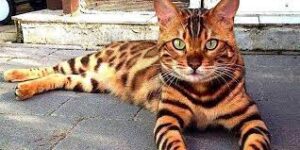When you first see the Bengal cat in your living space You might think that a jungle cat has broken into. That’s because this spectacular breed is marbled or spotted coat that has a look that resembles a wild leopard or ocelot. However, the Bengal is not wild and is a gentle temperament and a warm personality. While Bengals were created by breeding domestic cats to an Asian leopard cat, their wild ways have long been left behind.

Bengal cats were first recognized as a breed in 1983, and since then , this gorgeous cat has seen a huge increase in its popularity. As with other hybrid breeds such as Savannah cats, Savannah cat, Bengal cats can be classified by how many generations they are removed from their original wild parent. The kitten of the Asian leopard is called an F1. Every subsequent generation receives the designation of a number like F2, F3, F4, etc. To be considered a domestic cat A Bengal should be at the very least an F4.
Before you buy the Bengal cat or kitten, be sure to contact your state and local governments and check if they’re banned in certain locations, including Hawaii as well as New York City. Bengals might also be subject to restrictions depending on whether they belong to the F1-F3 generation.
Appearance
Bengal cats are slim and agile breed. They typically weigh between 8-15 pounds. They are adored for their thick short coats, which are boldly decorated in shades of silver, brown and snow. Their fur is extremely smooth and soft and feels a little like the hair of a bunny. The most frequent colors of eyes observed in Bengal cats are brown, yellow, orange and green.
A Bengal cat’s coat distinguishes him from other felines. In reality, Bengals are the only breed that can have stripes that reflect their wild Asian leopard origins. Spotted or marbled coats are also very popular and look just as stunning. Because their furs are so thin, they just require an occasional brushing session to remove loose hair and dead skin cells.
While Bengal cats weigh approximately the same as a normal household cat, they’re larger in size because of their long, muscular bodies. And their lengthy legs are great for jumping, therefore don’t be surprised if you spot your Bengal gazing at you from countertops and shelves.
Temperament
While a Bengal appears on the outside, he’s incredibly soft and sweet inside. These affectionate cats are gregarious but they can also choose a person in their family as their top. Bengals do great with other cats, children and even with their family dog. But the most important factor is early socialization and exposure to family members as young as possible. If you decide to introduce the new pet to Bengals that are already established in their routines, you may face an issue.


